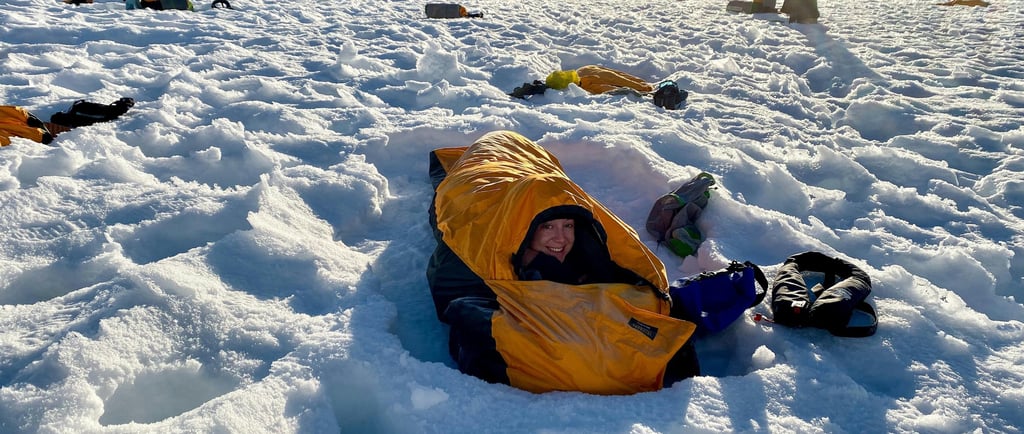How to Choose the Right Sleeping Bag for Your Next Camping Adventure
ADVENTURE
Mark Fenech
4/22/20253 min read


When it comes to camping, few pieces of gear are as essential to your comfort (and survival) as your sleeping bag. After a long day of hiking, paddling, or simply exploring the outdoors, you want a warm, cozy place to crash. But with so many options on the market, choosing the right sleeping bag can feel overwhelming. Don’t worry — The Wise Wayfarer has you covered. Here’s what you need to know before you buy.
1. Know the Temperature Rating
Sleeping bags come with temperature ratings that indicate the lowest temperature at which the bag will keep you comfortable.
Summer Bags: Rated for 35°F and above. Lightweight and compact — perfect for warm-weather camping.
Three-Season Bags: Rated between 20°F and 35°F. Versatile enough for spring, summer, and fall.
Winter Bags: Rated for 20°F and below. Built for cold-weather expeditions and snow camping.
Pro Tip: Always choose a sleeping bag rated 10-15 degrees cooler than the coldest temperature you expect to encounter. It’s easier to cool down by unzipping than to warm up when you’re already freezing.
2. Choose Your Insulation: Down vs. Synthetic
There are two main types of insulation:
Down: Lightweight, ultra-warm, and compresses better. Ideal for backpacking and dry conditions. However, down loses its insulating power when wet (unless it’s treated with water-resistant coatings).
Synthetic: Bulkier and heavier, but performs better in damp environments and is usually more affordable.
If you’re venturing into wet, unpredictable conditions, synthetic might be your best bet. For dry climates and serious weight savings, down wins the day.
3. Consider the Shape
Sleeping bags aren’t one-size-fits-all. The shape you choose will impact both comfort and warmth.
Mummy Bags: Snug fit, tapering at the feet. Excellent heat retention and packability — perfect for backpackers and cold weather.
Rectangular Bags: Roomier and more comfortable, but less thermally efficient. Great for car camping or warm-weather trips.
Semi-Rectangular (Modified Mummy): A hybrid between the two. A good middle ground if you value both space and warmth.
If you toss and turn at night, a semi-rectangular or roomier mummy bag could make a world of difference.
4. Look at Weight and Packability
For backpackers, every ounce counts. Down bags are generally lighter and more compressible, making them ideal for multi-day hikes. Car campers have the luxury of prioritizing comfort over weight, so a heavier, plusher bag isn’t a problem.
Always check the packed size too — a compact bag will leave you more room for other essentials.
5. Don’t Forget About Features
Modern sleeping bags come with a ton of bonus features that can really elevate your camping experience:
Draft collars and draft tubes to prevent cold air from sneaking in.
Zipper options, like two-way zippers for ventilation or anti-snag designs.
Hood cinches for extra warmth around your head.
Internal pockets for stashing valuables.
Sleeping bag compatibility (like zipping two bags together).
Decide what’s most important to you before making your purchase.
6. Test It Out if You Can
If possible, try lying down in the sleeping bag before you buy. Make sure you have enough room to move around and that the bag feels comfortable against your skin. Some outdoor retailers even have “test” rooms where you can crawl into a few models to find your perfect match.
Final Thoughts
Choosing the right sleeping bag is about matching your gear to your adventure. Think about the weather, the weight you’re willing to carry, and how much space you need to sleep comfortably. With a little bit of research (and maybe a few cozy test runs), you’ll find the perfect bag to keep you warm, dry, and dreaming under the stars.
And hey — if you’re looking for sleeping bag recommendations, head over to the Explore page on Fen’s Finds where I’ve curated some of my favorites!
See you on the trail,
Mark
The Wise Wayfarer
A Curated Collective
© 2024-2025 Fen's Finds. All rights reserved.
Fen’s Finds earns from qualifying purchases as an Amazon Associate
